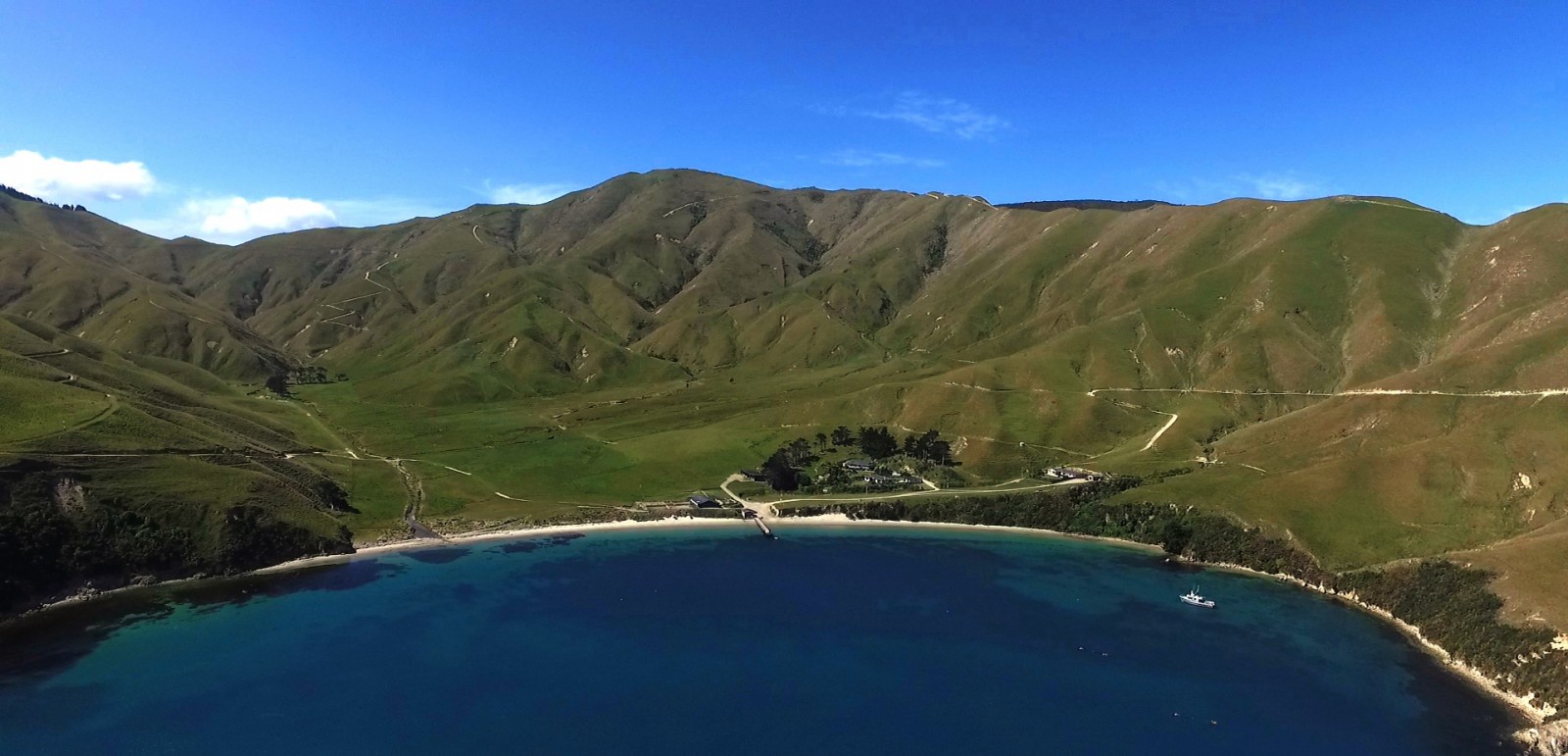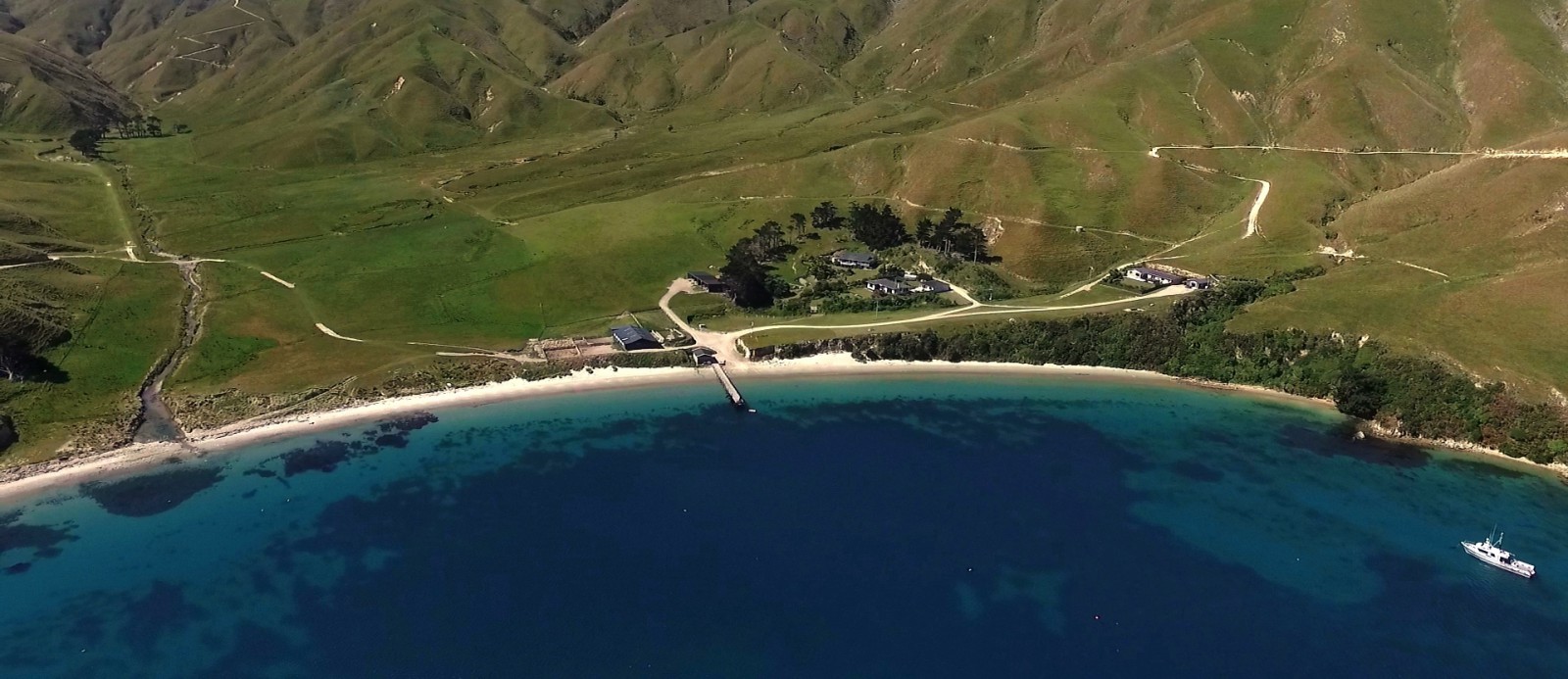Okukari means the place of young birds. This probably indicates it was once a breeding place for sea birds.1
Okukari Bay adjoins Whekenui Bay, and has a shared history of human settlement. Oral, written and archaeological records all indicate that pā, fortified settlements, have been in the area since at least the time of Captain Cook’s voyages.
Descriptions from 1774 note the presence of a pā in the vicinity of Whekenui and Okukari Bays. It is likely this pā and one across the channel on the southern side of Tory Channel were used unsuccessfully as refuges by local Māori during the 1829 to 1830 invasion of the top of the South Island/Te Tau Ihu by the coalition of North Island iwi under the chief Te Rauparaha.2
The Māori tribe or iwi, Te Ātiawa o Te Waka-a-Māui, is closely associated with Whekenui Bay. The iwi settled here in 1828. Approximately 150 people settled in the bay at this time, creating extensive fenced gardens for potatoes and taro and also raising livestock.3
Following the arrival of Europeans, inhabitants of the bay became involved in both missionary and whaling activities. The Methodist missionary, the Reverend Samuel Iornside preached to congregations of several hundred people in the adjoining bays and oversaw the construction of a chapel in the 1840s.4 Māori from the village worked on nearby whaling stations at Te Awaiti and Fishermans Bay and whalers also settled in the Whekenui Bay, leasing flat land for farming from various Māori owners from the mid-1860s onwards.5
European whalers and Māori women from the settlements married and raised families in the bays, the descendants of whom continue to live and work in the area.6
While whaling ceased in the Tory Channel/ Kura Te Au in the 1960s, from 2004 to 2016 previous whalers worked with the Department of Conservation to undertake the annual, Cook Strait Whale Survey. The aim of the survey, undertaken from the hills above Okukari Bay was to determine how humpback whales were recovering since whaling ended and to further efforts to protect the whales.7
1. W. H. Sherwood Roberts, “Maori Nomenclature: Maori Names of Places in the Provincial District of Marlborough,” Otago Daily Times, Issue 15205, 26 July 1911, accessed November 11, 2018, https://paperspast.natlib.govt.nz/newspapers/ODT19110726.2.79 .
2. Tristan Wadsworth, “The spatial distribution of pā in Tōtaranui/Queen Charlotte Sound, New Zealand”, Thesis, Master of Arts, University of Otago, 2015. Accessed, September 25, 2018 from http://hdl.handle.net/10523/5734 .
3. Marlborough District Council, Nelson City Council and Tasman District Council, “Te Tau Ihu Statutory Acknowledgements 2014”, accessed July 18, 2018, http://www.nelson.govt.nz/assets/Environment/Downloads/TeTauIhu-StatutoryAcknowledgements.pdf , 104.
4. Wesley A. Chambers, Samuel Ironside in New Zealand, 1839-1858 (Auckland: Ray Richards, 1982) 108, 116, accessed, July 31, 2018, http://www.methodist.org.nz/files/docs/wesley%20historical/samuel%20ironside%20in%20nz.pdf .
5. Loreen Brehaut, “Whekenui Leading Lights”, the Prow, accessed November 14, 2018, http://www.theprow.org.nz/yourstory/whekenui-leading-lights/#.W-tZX5MzbIU .
6. Wadsworth, “Distribution of pā”.
7. “Whale survey canned due to loss of funding”, Radio New Zealand, 2016, accessed, November 211, 2018, https://www.radionz.co.nz/national/programmes/afternoons/audio/201802895/whale-survey-canned-due-to-loss-of-funding .






